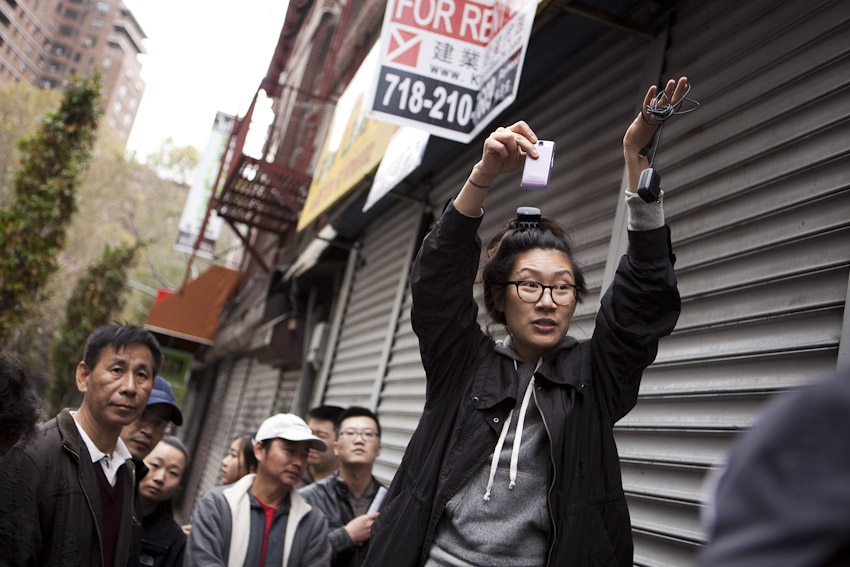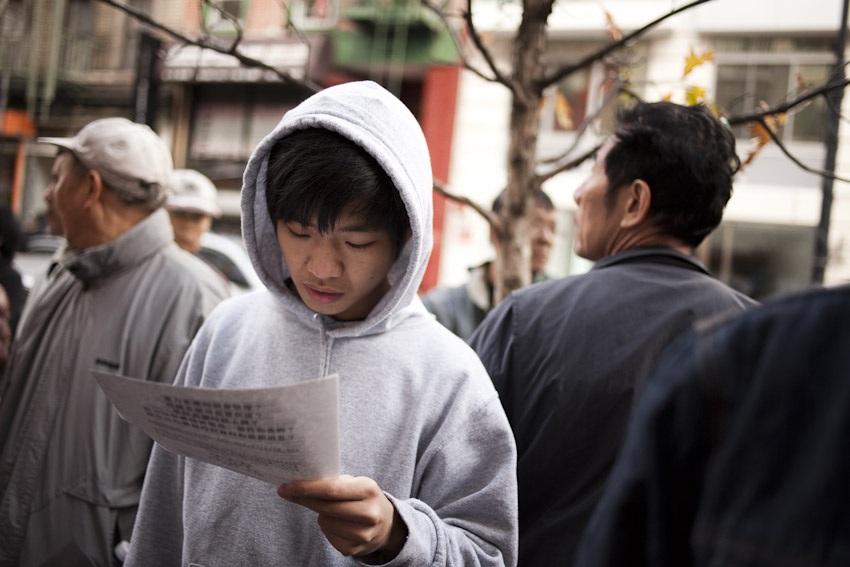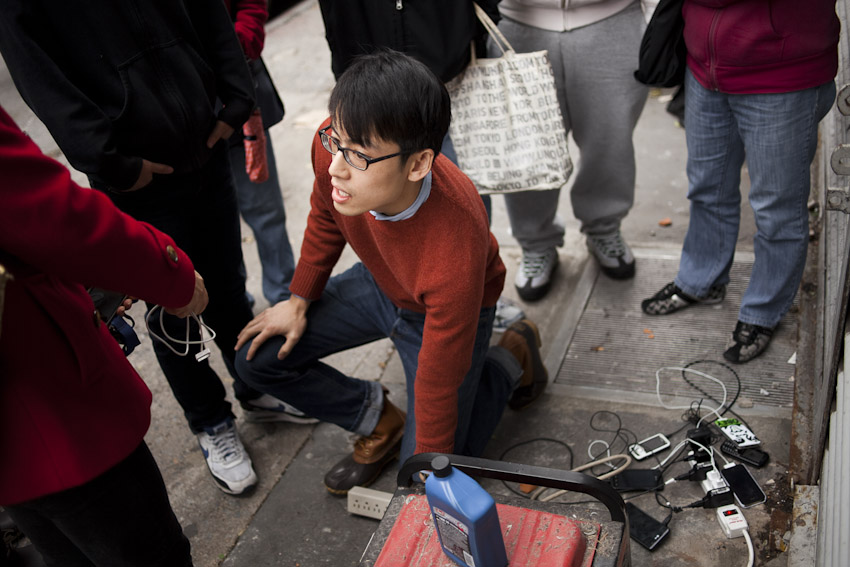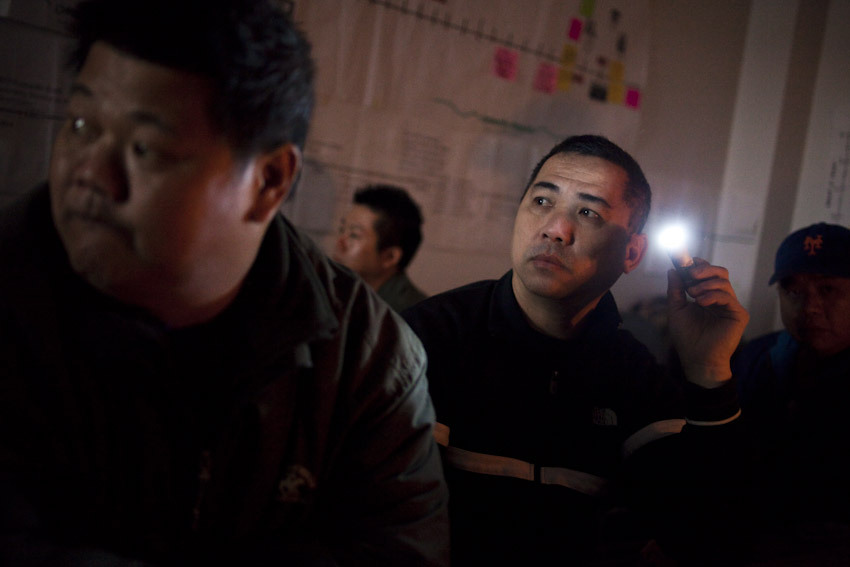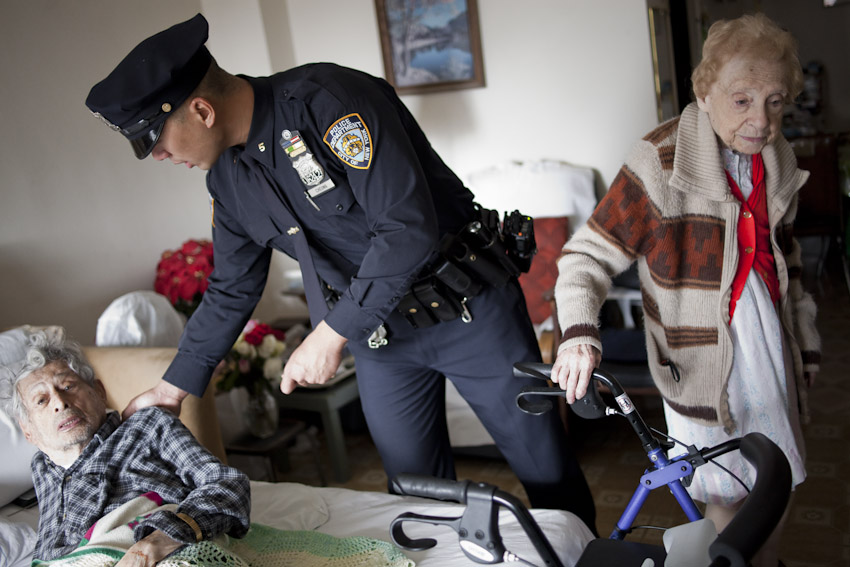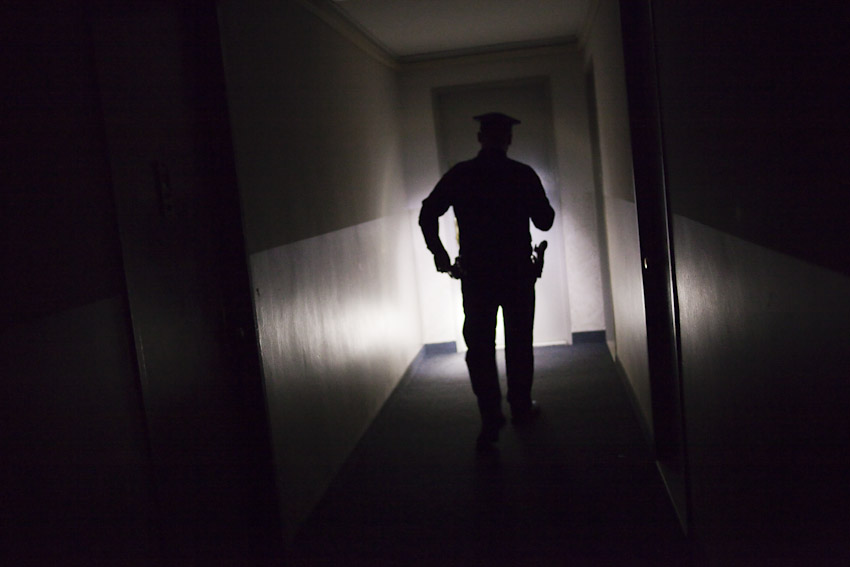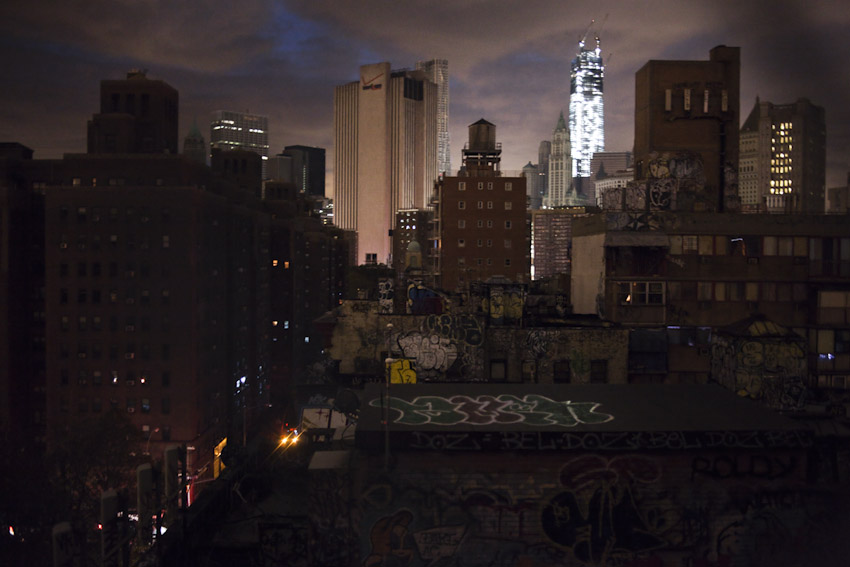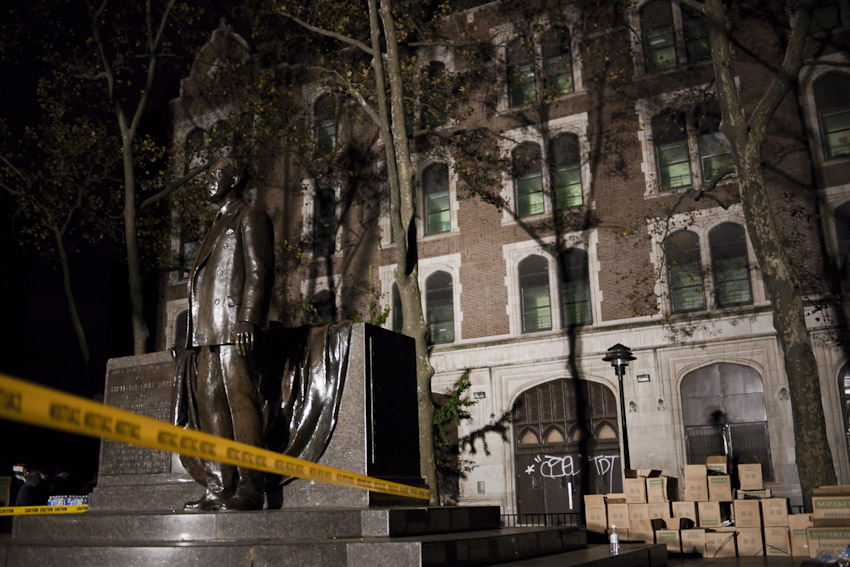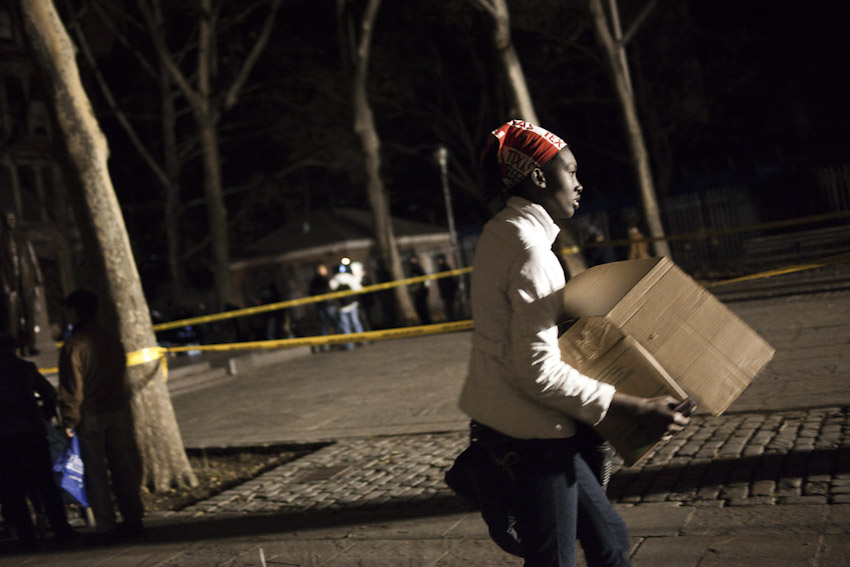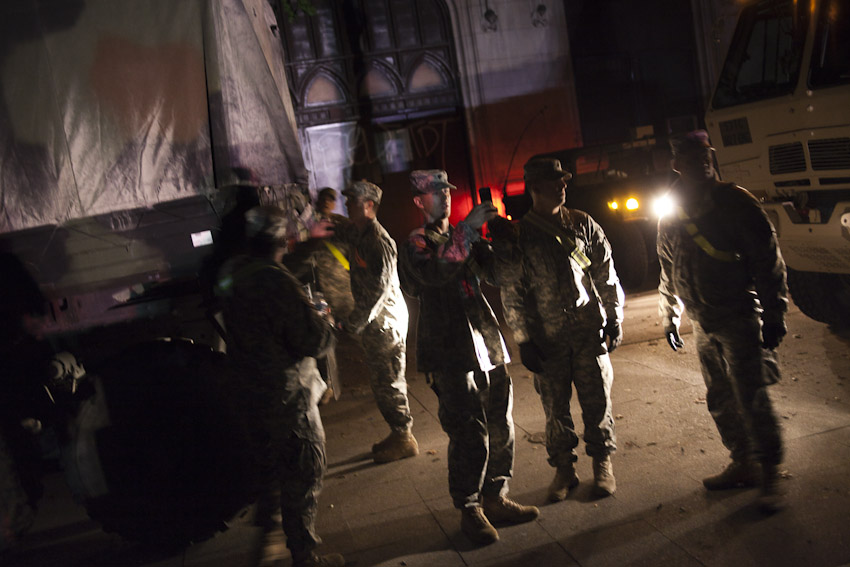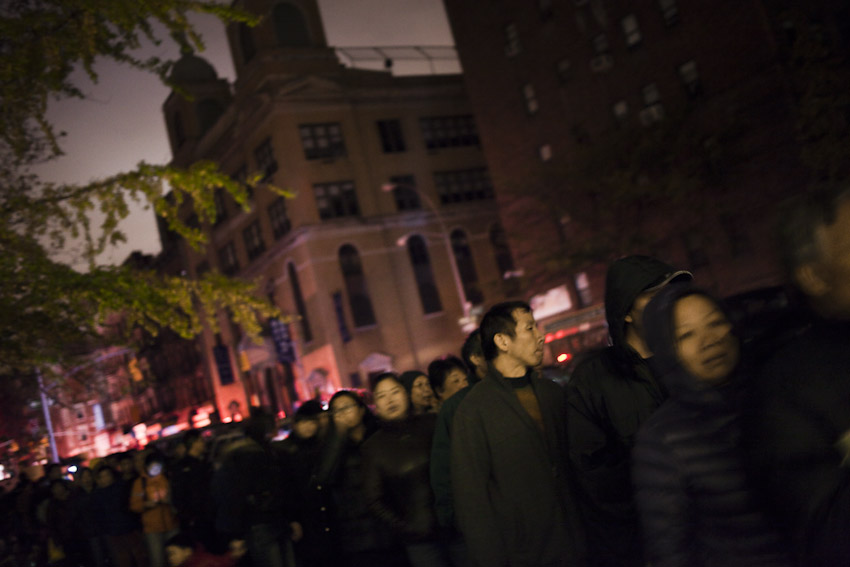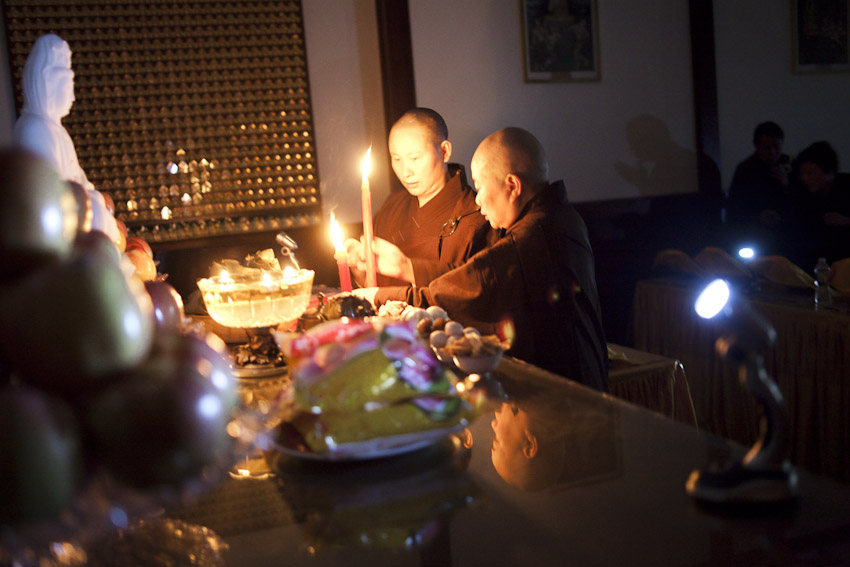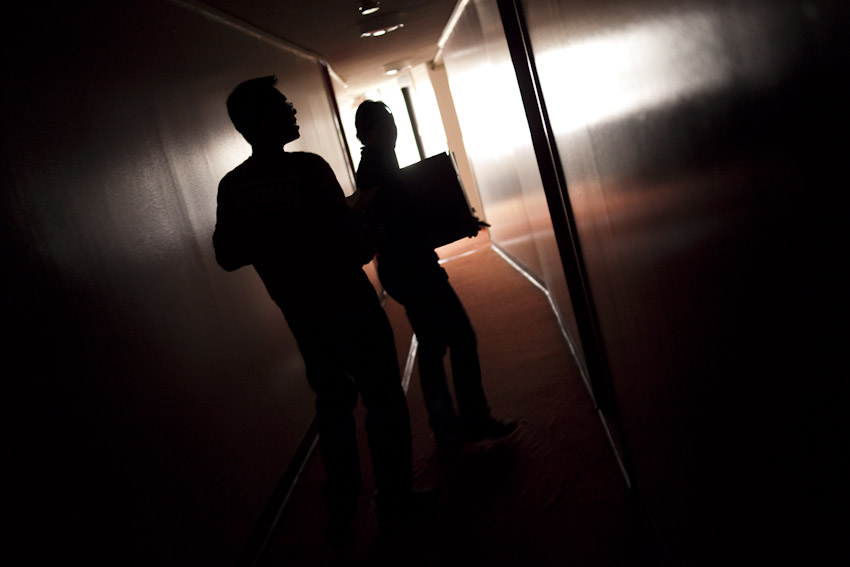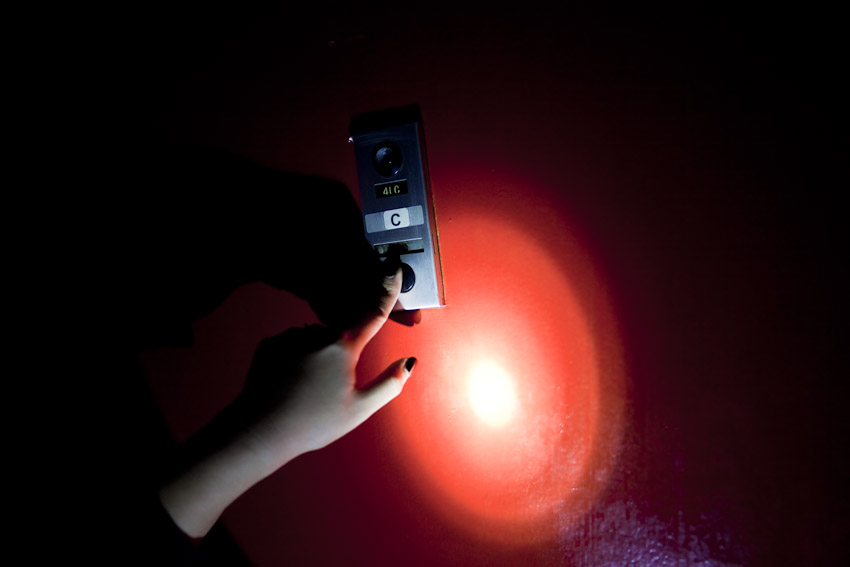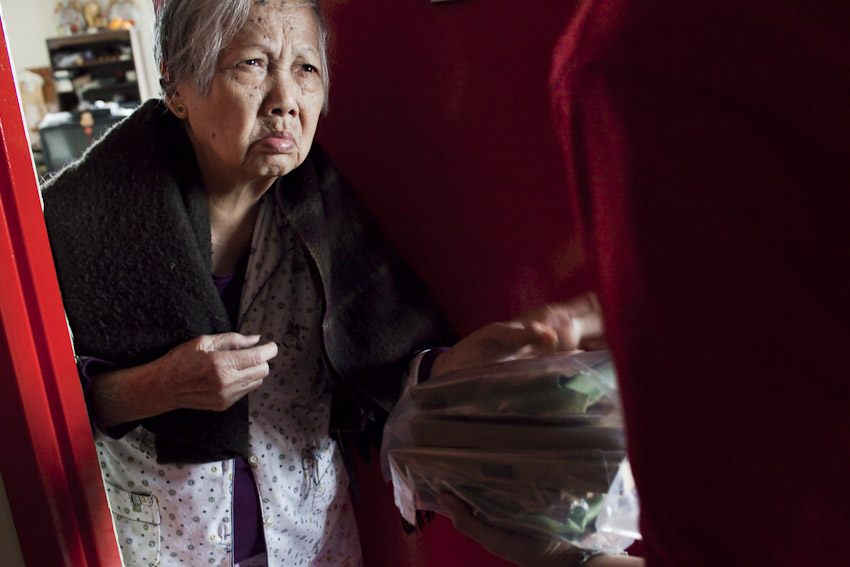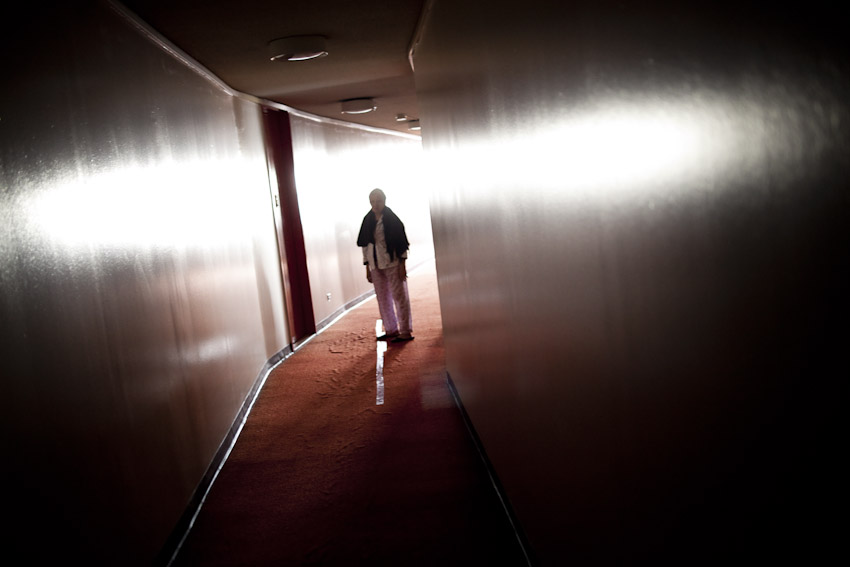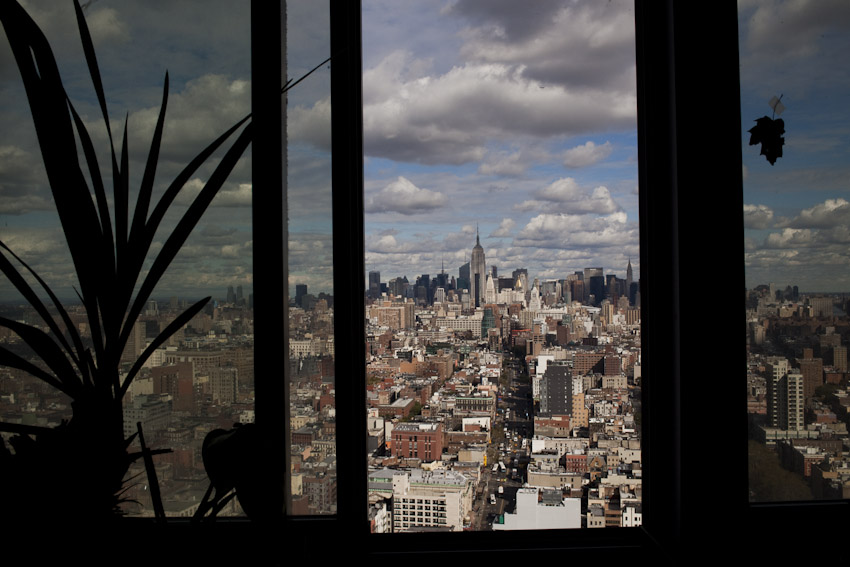Chinatown Blackout – A community rallies after Hurricane Sandy
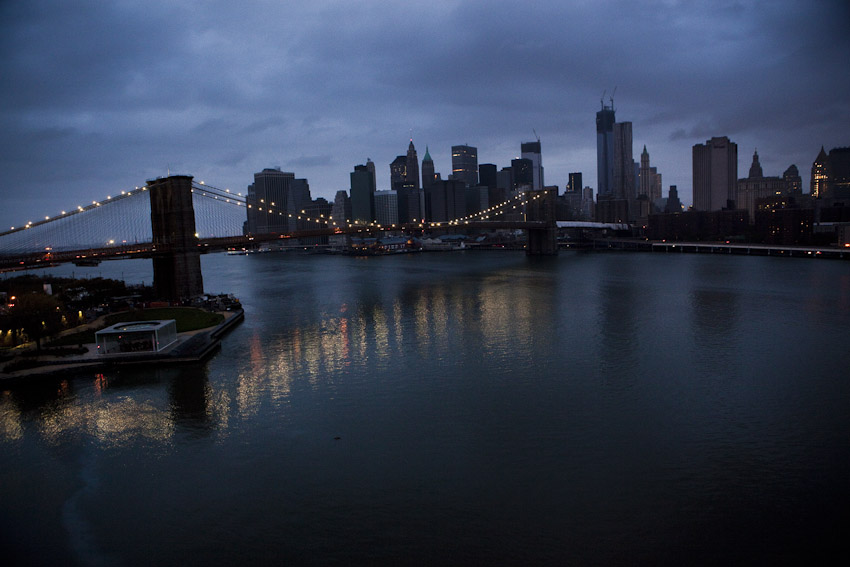 After the lights went out in Lower Manhattan, making a decision on what area to cover in the following days wasn’t difficult. I had spent time over the past few months photographing in NYC’s Chinatown community, slowly getting to know the neighborhood and some people there.
After the lights went out in Lower Manhattan, making a decision on what area to cover in the following days wasn’t difficult. I had spent time over the past few months photographing in NYC’s Chinatown community, slowly getting to know the neighborhood and some people there.
During the four days of the black-out, the community had to made do with whatever improvised resources were at hand. Residents relied on flashlights and candles; high rise apartment buildings lost running water and elevator service, a hardship especially for the neighborhood’s many elderly residents who were stranded on the higher floors. In a linguistically insular community of large numbers of recent immigrants there was an information blackout as much as there was power failure, and many residents were left in the dark as to what city services were available and when amenities, schools and transportation might be restored. Many people in this mostly working class community work in informal and service sector jobs or run small businesses, and they were losing desperately needed income every day businesses were shuttered in the wake of the storm.
As the days wore on, fewer shops managed to stay open to offer the most basic necessities, and food became harder to come by without leaving the area of the black-out. Government aid took three full days to arrive, but community leaders and organizations rallied and made sure that everyone made it safely through this crisis.
DAY 1 – Queuing up for supplies, preparing lunch by candle light:
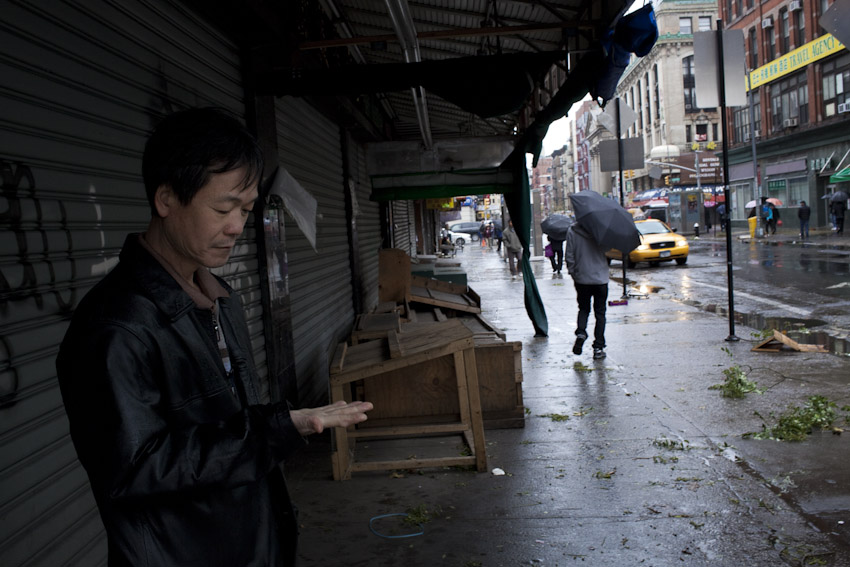
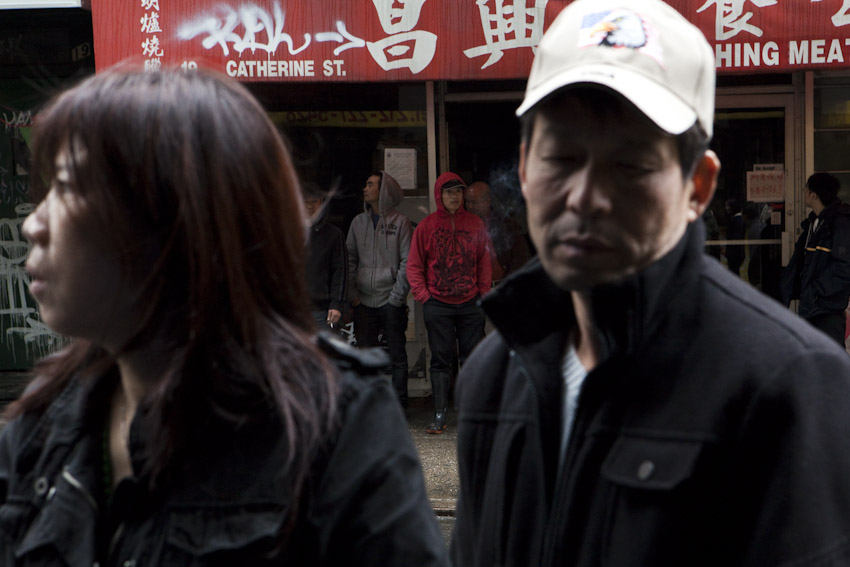
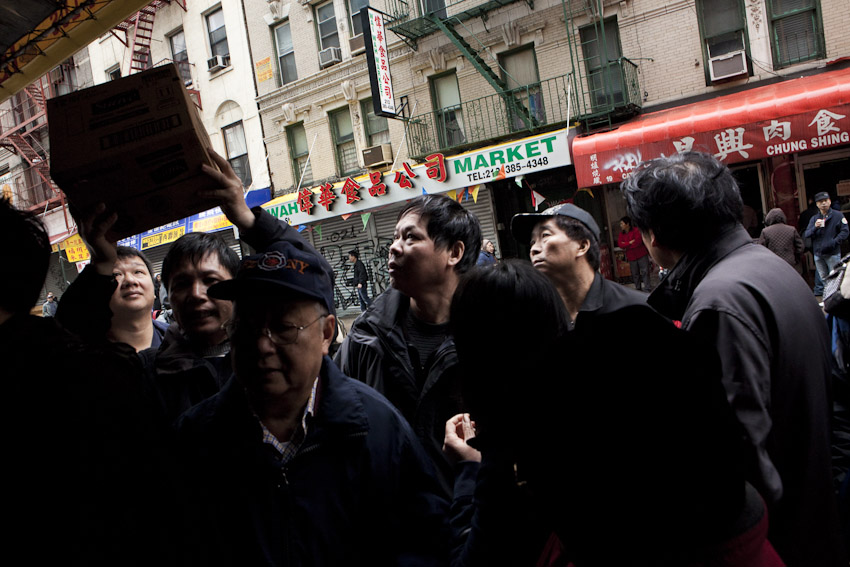
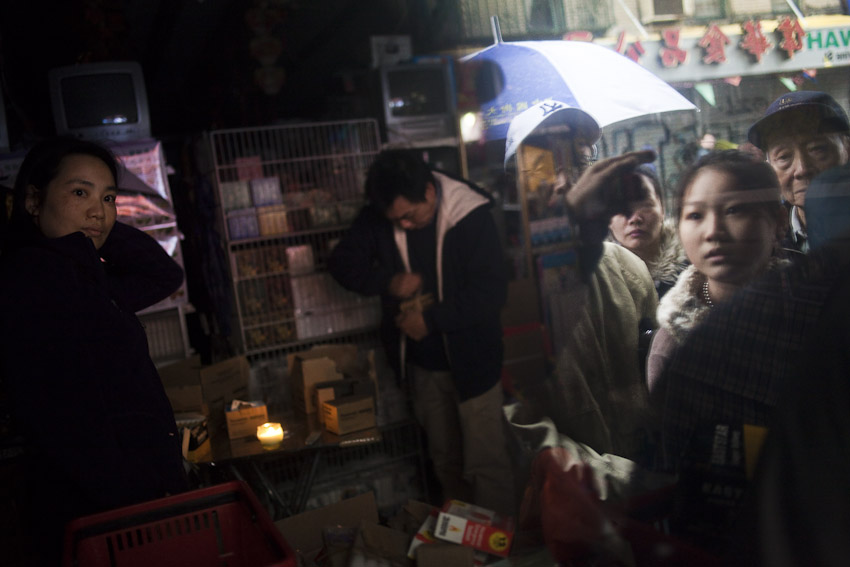
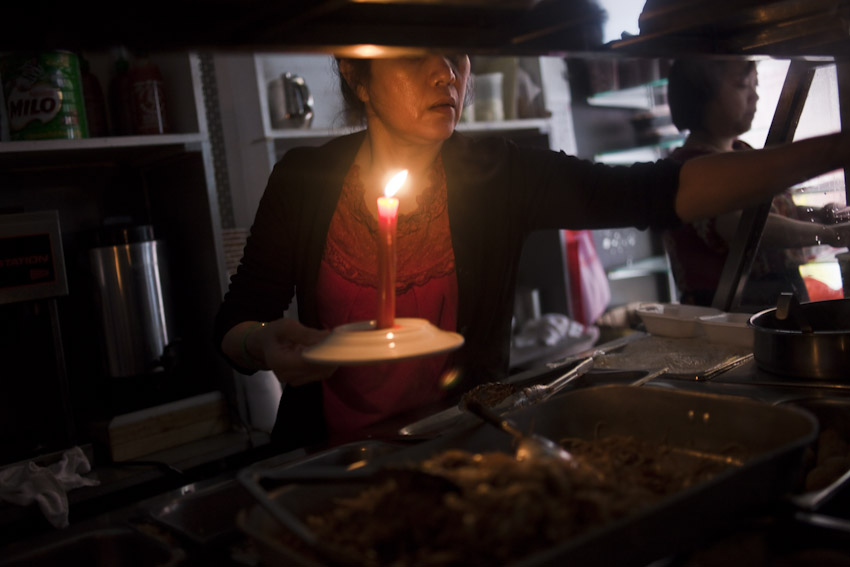 DAY 1 – Organizing relief efforts at CAAAV, checking in on neighbors:
DAY 1 – Organizing relief efforts at CAAAV, checking in on neighbors:
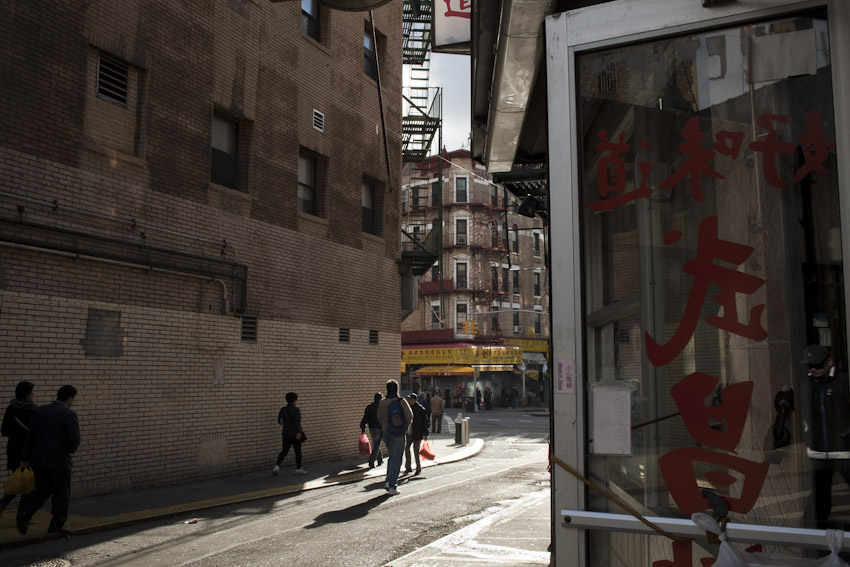
CAAAV: Organizing Asian Communities, a community activist and tenant organization, operated a volunteer-run general relief operation out of their store front office at 46 Hester Street. With the help of a donated generator they were able to recharge people’s phones; at first dozens, later hundreds of volunteers coordinated donations of food and supplies, checked on older and home bound residents, and updated the community on service outages in several Chinese languages. While government information and aid remained absent, independent community groups recruiting volunteers via social media jumped in to fill the void.
Seniors who were unable to leave their high-rise apartment buildings became an urgent concern throughout the neighborhood. The NYPD began carrying out “wellness checks” immediately after the storm hit, and many community groups began channeling their volunteer efforts towards canvassing buildings for people in need. P.O. Vincent Cheung of the NYPD’s 5th Precinct Community Affairs Unit received a call to check up on a couple on the 18th floor of the Chatham Greene Co-Op Apartments on Wednesday afternoon, when buildings in the area had been without running water or electricity for two days.
DAY 3 – FEMA emergency supplies arrive after dark:

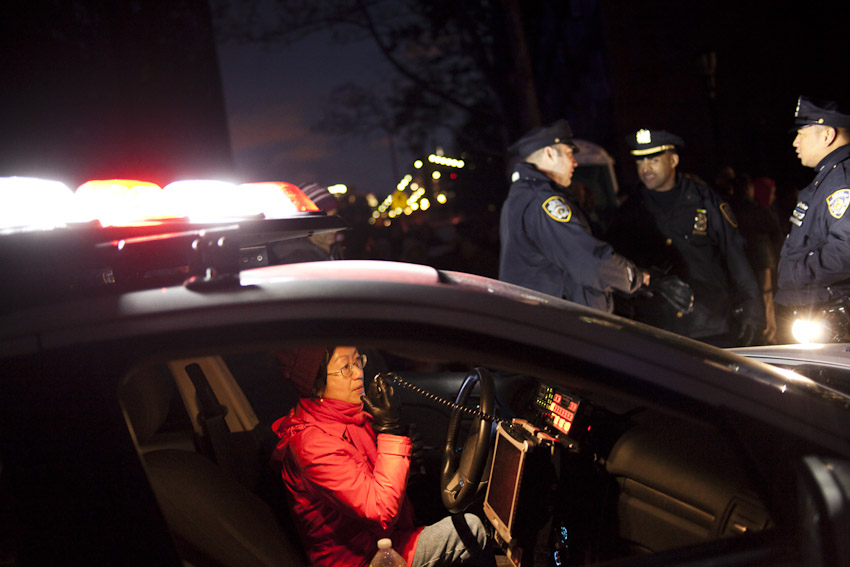 Three days after Hurricane Sandy, government help arrived in the area. New York City Council Member Margaret Chin, who along with her staff had been tireless in coordinating volunteer relief efforts, made a Chinese language announcement about food rations: 3 MRE meals and 5 bottles of water per person. National Guard troops from the Binghamton area delivered FEMA emergency supplies at the Alfred E. Smith Houses in the Two Bridges area; scheduled to arrive in the afternoon, the aid didn’t make it to the neighborhood until nightfall because the troops couldn’t find their drop off points.
Three days after Hurricane Sandy, government help arrived in the area. New York City Council Member Margaret Chin, who along with her staff had been tireless in coordinating volunteer relief efforts, made a Chinese language announcement about food rations: 3 MRE meals and 5 bottles of water per person. National Guard troops from the Binghamton area delivered FEMA emergency supplies at the Alfred E. Smith Houses in the Two Bridges area; scheduled to arrive in the afternoon, the aid didn’t make it to the neighborhood until nightfall because the troops couldn’t find their drop off points.
DAY 4 – Buddhist celebrations, getting supplies up 44 flights of stairs:
Holiday celebrations proceeded by flashlight and candles at Grace Gratitude Buddhist Temple on East Broadway, as in many other temples around the neighborhood.
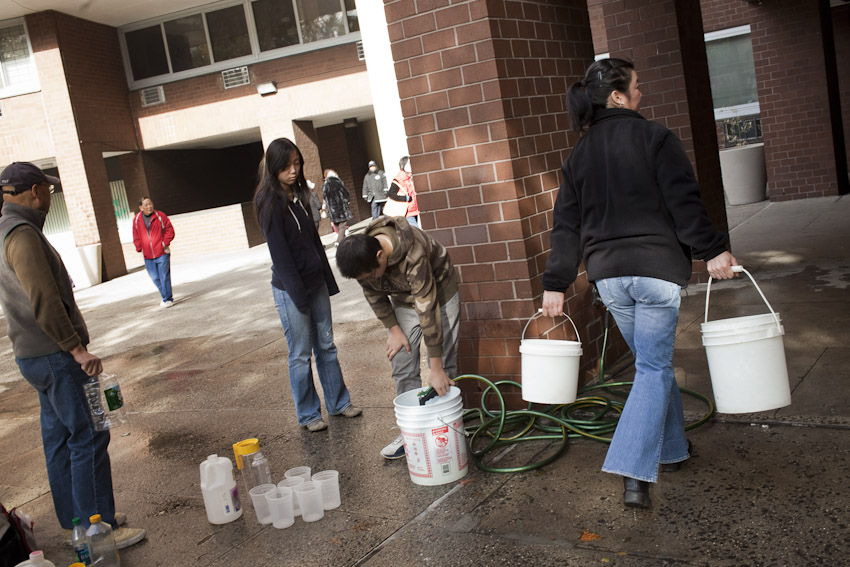
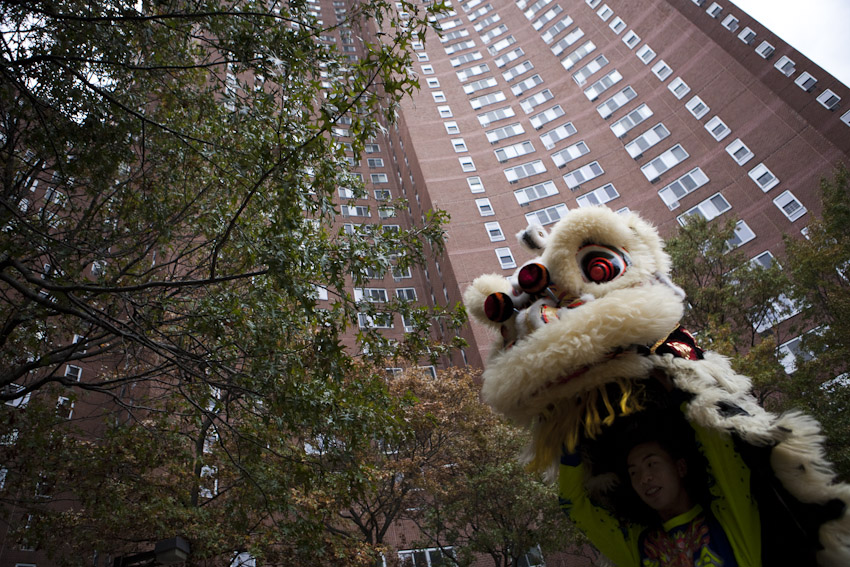 Relief efforts four days after the storm focused on getting drinking water and FEMA rations to elderly and immobile residents trapped in their high-rise buildings. A crowd of volunteers from within and outside of the community rallied to get supplies up the 44 floors of the Confucius Plaza Apartments. Chinese language proficiency was needed to explain to seniors how to heat up their MRE rations.
Relief efforts four days after the storm focused on getting drinking water and FEMA rations to elderly and immobile residents trapped in their high-rise buildings. A crowd of volunteers from within and outside of the community rallied to get supplies up the 44 floors of the Confucius Plaza Apartments. Chinese language proficiency was needed to explain to seniors how to heat up their MRE rations.
The skies cleared up, and power was eventually restored later that Friday evening. Teenage volunteers from the New York United Lion & Dragon Dance Troupe who had come out to help with the National Guard/FEMA aid delivery half-jokingly took full credit: They figured that the lion dance they had staged in the court yard of Confucius Plaza had helped chase away the evil spirits.
The neighborhood had a way to go before resuming normal routines, and people were aware that other areas of New York City were still struggling to regain power and dig out from under much worse devastation. With a cold spell and new storms being forecast to hit the region in the following week, community organizations shifted towards sending volunteers to Far Rockaway, Red Hook and Staten Island to help other neighborhoods in need.
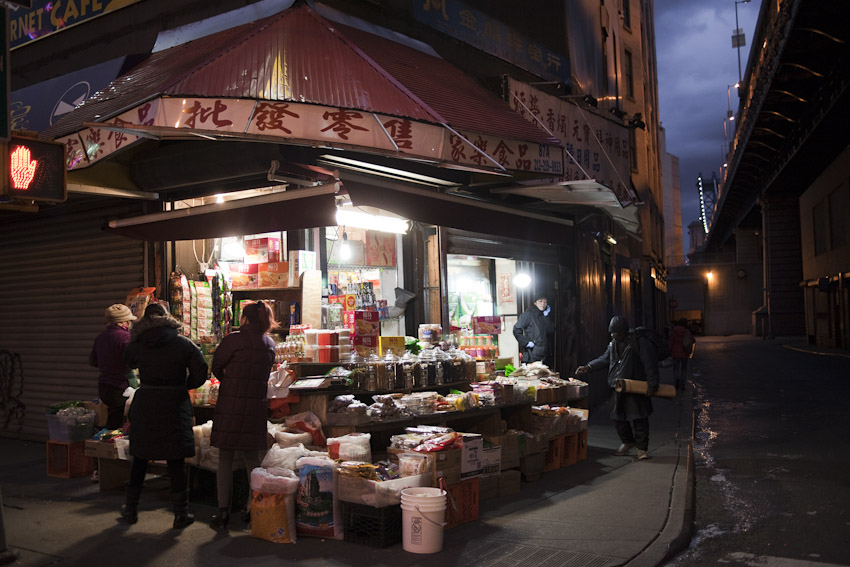 The four days of the black-out in Lower Manhattan were one of those times when New Yorkers rallied together in a way that never ceases to amaze. Being able to spend this time in this particular community, and experiencing such a warm welcome by so many people who were undergoing a series of incredibly stressful and exhausting days – while displaying an unflagging attitude of cheerful and professional dedication – is something I will definitely remember. The unquestioning and generous access I was granted while photographing their efforts will always be appreciated.
The four days of the black-out in Lower Manhattan were one of those times when New Yorkers rallied together in a way that never ceases to amaze. Being able to spend this time in this particular community, and experiencing such a warm welcome by so many people who were undergoing a series of incredibly stressful and exhausting days – while displaying an unflagging attitude of cheerful and professional dedication – is something I will definitely remember. The unquestioning and generous access I was granted while photographing their efforts will always be appreciated.
A more complete set of images can be found here.

